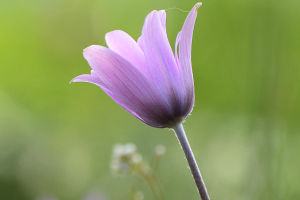Black langurs are slender, with a small head, slender and limbs. It has a bunch of upright black crested hairs on the top of its head, and white hairs on both cheeks from the tips of the ears to the corners of the mouth, shaped like two white whiskers, which is very interesting.
The black langur is a typical arboreal langur in tropical and south subtropical Southeast Asia. It mainly inhabits tropical rain forests, monsoon forests and subtropical monsoon evergreen broad-leaved forests on both banks of rivers and low mountain valleys. The altitude of the habitat is between 600-1200 m.
Because tropical and subtropical forests are lush, bushes, steep mountains, limestone areas with many caves. Therefore, black langurs are good at climbing and jumping. In rare places, the cliffs with sparse trees are the main places for them to forage.
At night, they rest in natural caves among the cliffs. They are very vigilant. Before entering the cave at dusk every day, the male beast as the leader of the group enters the cave first to observe.
When no abnormality is found, other members enter the cave one by one. The last ones who enter the cave are pregnant women and females with cubs.
Before going out of the cave every morning, it is also the leader who sticks his head out to observe the movement outside the cave, and then the other members walk out of the cave one after another.
The black langur living in the northern part of the distribution area has long and dense body hair, and thicker fat accumulates under the skin in winter, so it has strong cold resistance.
In recent years, the International Union for Conservation of Nature has rated black langurs and white-headed langurs as endangered and critically endangered, respectively. In order to save these lovely nature spirits, we should take practical actions to protect them:
1. Legal protection
Strictly enforce the law to prevent illegal hunting, and prop up an umbrella of the rule of law for the population of black and white langurs to thrive.
2. Publicity and education
Through publicity and education, make people aware of the importance of habitat protection in saving these rare and endangered species.
3. Protect the living environment
The habitats they depend on have been severely damaged, and primates have to deal with humans, and infectious diseases in the human population make primate populations face severe survival challenges.
For many endangered animals, their survival requires more than room to breathe. Giving them a calm, peaceful living environment is one of the strongest protections against them.
Endangered animals are a precious, irreplaceable and renewable natural resource, and these cute little animals are also enriching our spiritual world. Let us see a colorful world, and let us take practical actions to protect it. These lovely creatures!


